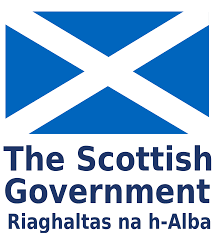Recent Scottish Goverment SDS reports: a summary.

The Scottish Government has recently released a number of research reports on Self-directed Support implementation in Scotland as follows:
Report 2: Evidence Assessment for Self-directed Support
Report 3: Self-directed Support Case Studies
Report 4: Summary of Study Findings and Implications
Report 1: The SDS Change Map
The SDS Change Map aims to capture the required changes for the effective delivery of social care within the context of Self-directed Support. The map consists of three tiers:
- the overall vision;
- the four key outcomes (numbered 1 to 4); and
- for each of the key outcomes, a set of intermediate outcomes (numbered 5 to 17), that need to be in place for the four key outcomes and overall vision to be achieved.
The report gives a clear explanation of how the change map was developed and what it sets out to achieve, and how it can be used, including by the Scottish Government who will, ‘use the SDS Change Map as a basis for ongoing monitoring and evaluation of implementation’, so makes for recommended reading for anyone working in the field of SDS and social care.
Report 2: Evidence Assessment for Self-directed Support
One of the main aims of the study was to produce a refreshed set of key research questions for the ongoing monitoring and potential evaluation of the move to Self-directed Support and the changes following from this.
Following the creation of the SDS Change Map, an assessment of existing evidence helped to create a revised set of research questions for future monitoring and evaluation, as well as looking at the economics/resource implications of self–directed approaches. The assessment of existing evidence included:
- a literature review of other evaluations of similar programmes;
- a review of current data collections in Scotland that potentially relate to self-directed support; and
- the production of case studies to explore the various ways self-directed approaches are being implemented across user groups and the potential for scaling up and replicating (Report 3).
The report ends with recommendations for future evaluation and ongoing monitoring. SDSS will be working hard to identify how our members can contribute to these recommendations being taken forward and we’d welcome your views on that.
Report 3: Self-directed Support Case Studies
This report brings together 13 case studies from six areas across Scotland:
- Dumfries & Galloway
- Edinburgh
- Highland
- Midlothian
- North Lanarkshire
- Eilean Siar (Western Isles)
and aims to help build a picture of the economic and resource implications of SDS as well as how Option 2 is working in practice. Each of the areas featured also has a short background on the context and how SDS is more generally being implemented, which gives a good overview of the similarities and differences across the areas.
Report 4: Summary of Study Findings and Implications
The aim of this report is to summarise the research that the Scottish Government commissioned into Self-directed Support, found in the three preceding reports.
Recommendations include:
- that longitudinal research is undertaken with people receiving social care starting from the time of initial assessment;
- a survey is undertaken of workers across social work and providers who deliver social care;
- a slightly expanded version of the Self-directed Support User Experience Survey is used to include a high-level question on social care outcomes;
- a survey is conducted of independent and third sector organisations who hold service contracts with statutory services; and
- a reporting requirement should be introduced for local authorities to evidence and self-assess their approach to strategic planning and how they are facilitating creative solutions to achieve individualised outcomes.

